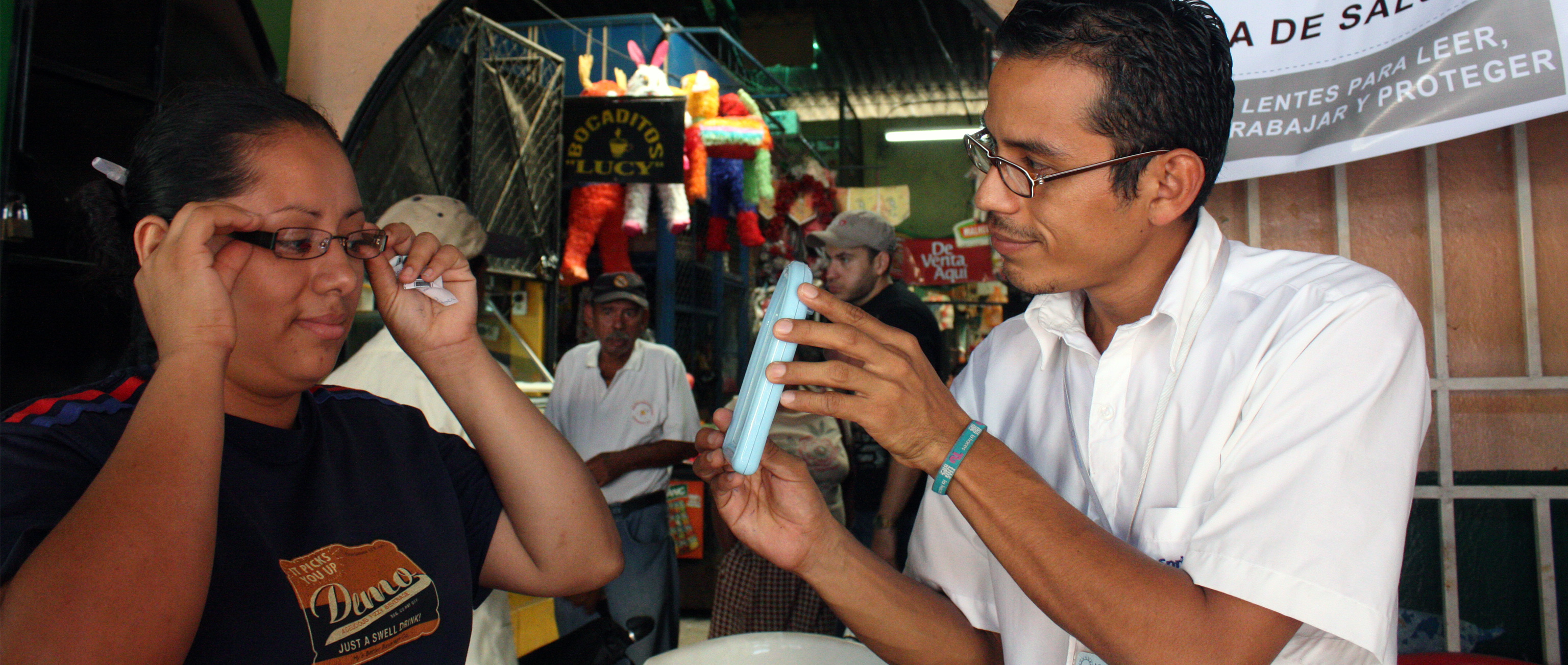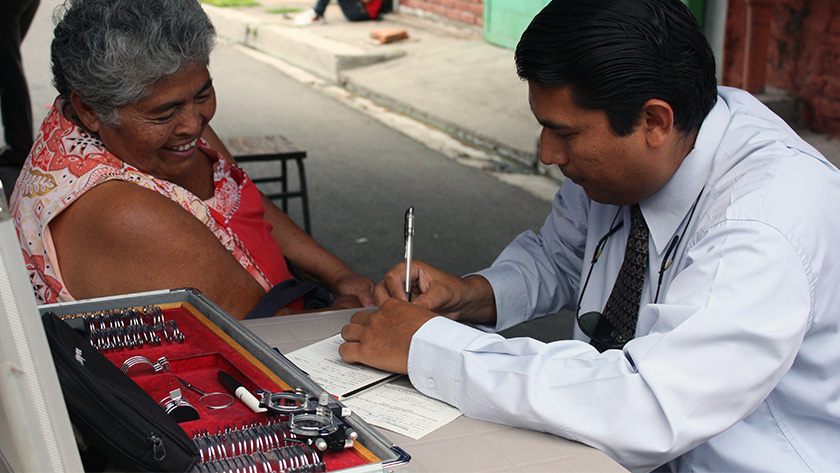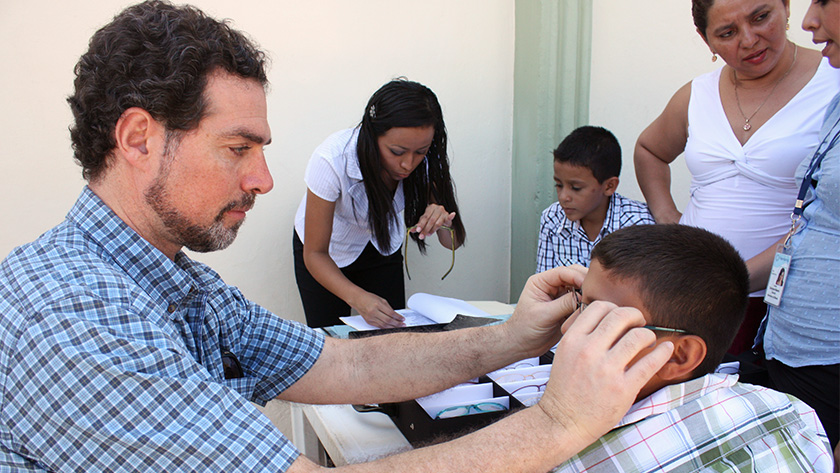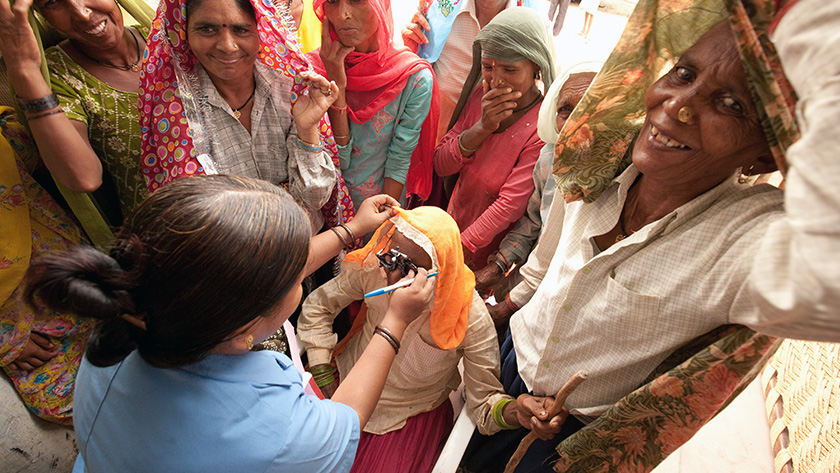Spotlight on System Orchestration: How EYElliance Works to Solve a Billion Person Problem

Social change is a team sport. We hear that a lot these days. The scope and scale of a problem that impacts billions of people demands deep, systemic collaboration and coalition building. Never will a single organization—or twenty working independently—solve such a problem for good.
Nearly 1 billion people around the world live with blindness or vision impairment that is correctable with a pair of eyeglasses. Without good vision, both children and adults are excluded from full access to economic opportunity. On a more fundamental level, poor eyesight can limit full participation and enjoyment of life overall. The benefits of corrected vision are incontrovertible: improved educational outcomes, increased personal earnings, increased productivity of the working poor, and improved literacy rates. While the necessary technology and large-scale distribution models exist, the problem persists.
In a series of spotlight pieces over the next few months, we will take a closer look at how EYElliance tackles this problem as a systems orchestrator—a multisector coalition with a global vantage point to hold and drive global strategy towards eradicating this solvable problem. As a neutral broker, EYElliance can knit together efforts that draw on the strengths of the public and private sectors along with the largest International Non-Governmental Organization (INGO) global development implementers.
Since only a handful of problems attract buy–in from the largest global actors, a top-down solution will always have its limitations. Meanwhile, social enterprises focused on scaling a proven solution will never solve a billion–person problem working alone—the limitations of a bottom-up approach.
“EYElliance was founded to accelerate the uptake by governments and the private sector of the most powerful proven solutions, developed by NGOs, social enterprises, and inclusive business models. We create linkages between the bottom up and top-down approaches. I call it a bottom up driven, top-down strategy.” Jordan Kassalow, co-Founder of EYElliance

EYElliance recognized the need for a coalition that would be nimble in approach and embrace iteration. They identify existing, proven working models and integrate them into broader systems. As we’ll explore in this series, by working with and through partner organizations, EYElliance addresses the systemic barriers to access and adoption that no single organization or business could accomplish on its own. Over the long term, they work to fix the problem for good through a creative, flexible, and persistent approach.
“EYElliance de-risks the adoption of scaling pathways that, when driven by government or entrepreneurs, will translate into national scale and 100s of millions of first-time glasses wearers. At the country level this involves accelerating replication of profitable business models and identifying and filling gaps that inhibit full integration of proven delivery models into government systems. All along the way we codify what this takes in both policy and practice generating efficiencies as we bring new actors into the solution.” Elizabeth Smith, co-Founder of EYElliance
Most social enterprises at some point in their lifespan reach the limitations of their impact and not every social enterprise has the skill set and capacity to engage in systems orchestration work. EYElliance co-Founders Jordan Kassalow and Elizabeth Smith embraced a beginner’s mind and an appetite for learning with humility. It launched with social capital and credibility because of Kassalow and Smith’s track record with VisionSpring, the pioneering social enterprise that delivers vision screening and affordable glasses to the world’s poor.

It began though at the ground level to gain credibility as a collaborator and coalition builder both within the eye care community of practice and among donors, bilateral and multi-lateral institutions, and INGOs. In the span of just a few years, EYElliance has taken its place in that landscape as an effective systems orchestrator with demonstrable impact.
Over the course of this series, we’ll draw on a rubric created by the Democracy Fund to explore the narrative of three of EYElliance’s key inflection points:

A recent report from Dalberg Advisors, The Case for Investing in Assistive Technology, projected the potential total lifetime economic gains for all those currently living with vision impairment—if equipped with eyeglasses—at a staggering $1.7 trillion for children and $3.6 trillion for adults. The need for affordable eyeglasses is finally getting the attention it deserves on the global development agenda. In a few short years, EYElliance has transformed the way key decision-makers view the issue area and has mobilized UN agencies, bilateral institutions, the World Bank, and others to think about and fund access to glasses differently.
EYElliance’s collaborations engage national governments and de-risk new market entry to transform systems to solve a problem that slows economic growth, limits children’s potential to learn, and stands in the way of a more inclusive global marketplace. This series will take a “howdunit” approach—borrowing a term from our friends at the Solutions Journalism Network. It will tease out what systems orchestration looks like in practical terms, exploring what has worked for EYElliance, where they’ve faced challenges, and what lessons may be transferable to other issue areas and actors. We hope this series will also be useful for others in the philanthropic community as they consider the impact of different type of organizational models in their investment decisions.
Want more stories of transformational change on the world’s most pressing problems? Sign up for Skoll Foundation’s monthly newsletter.
Notifications